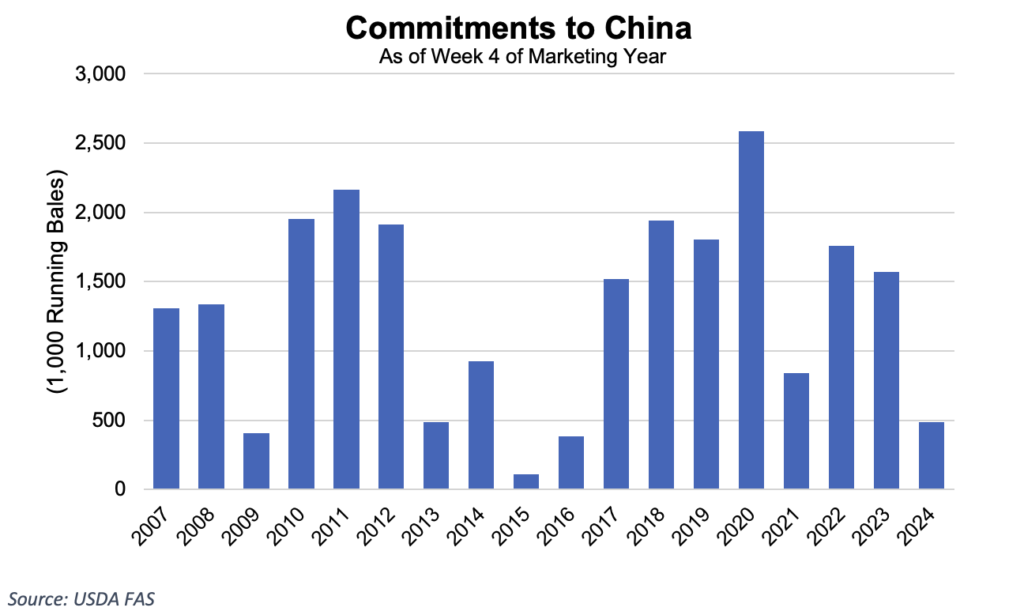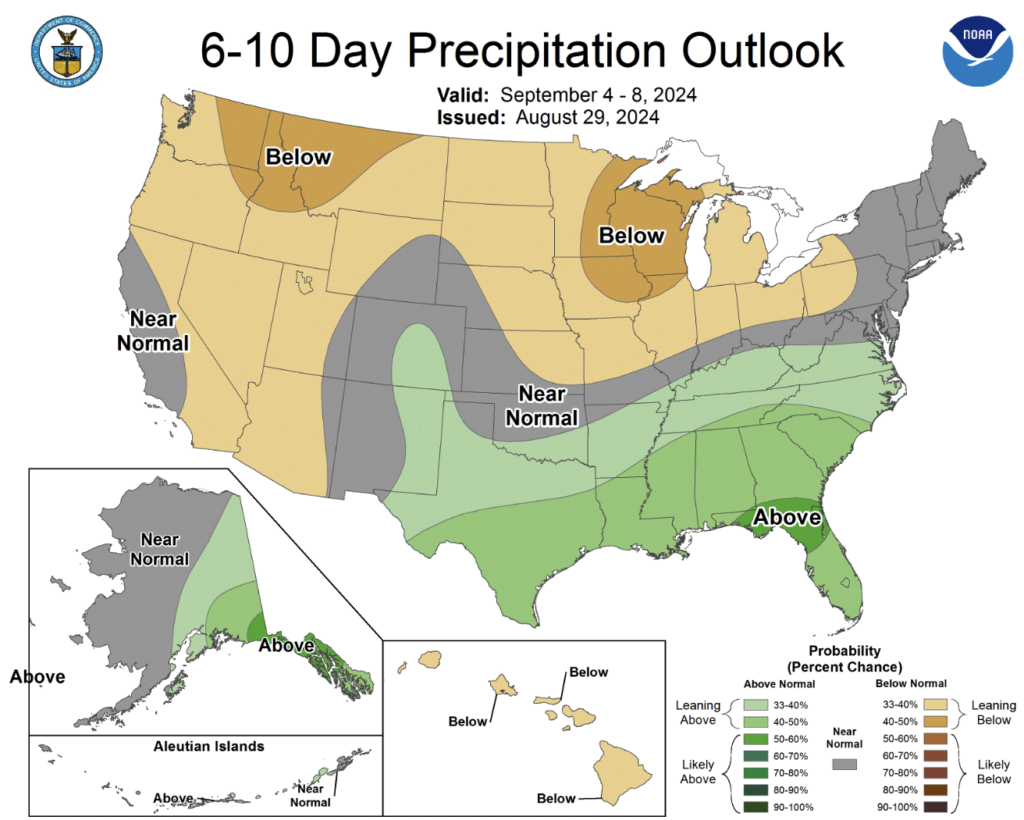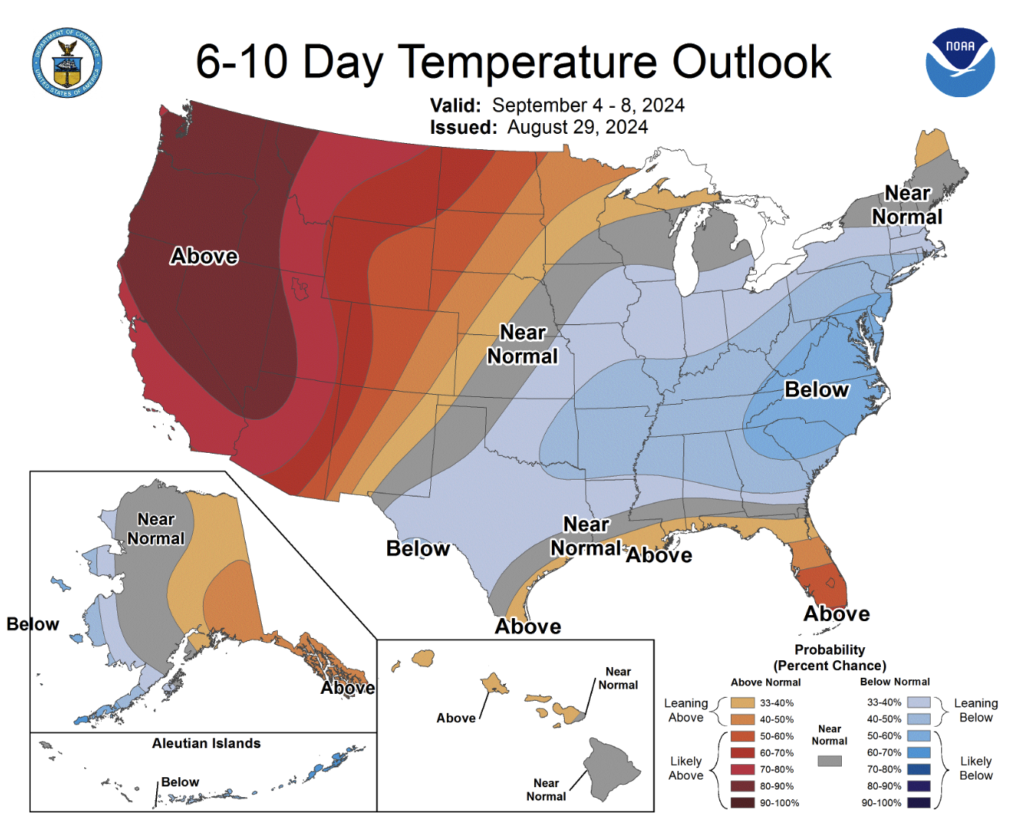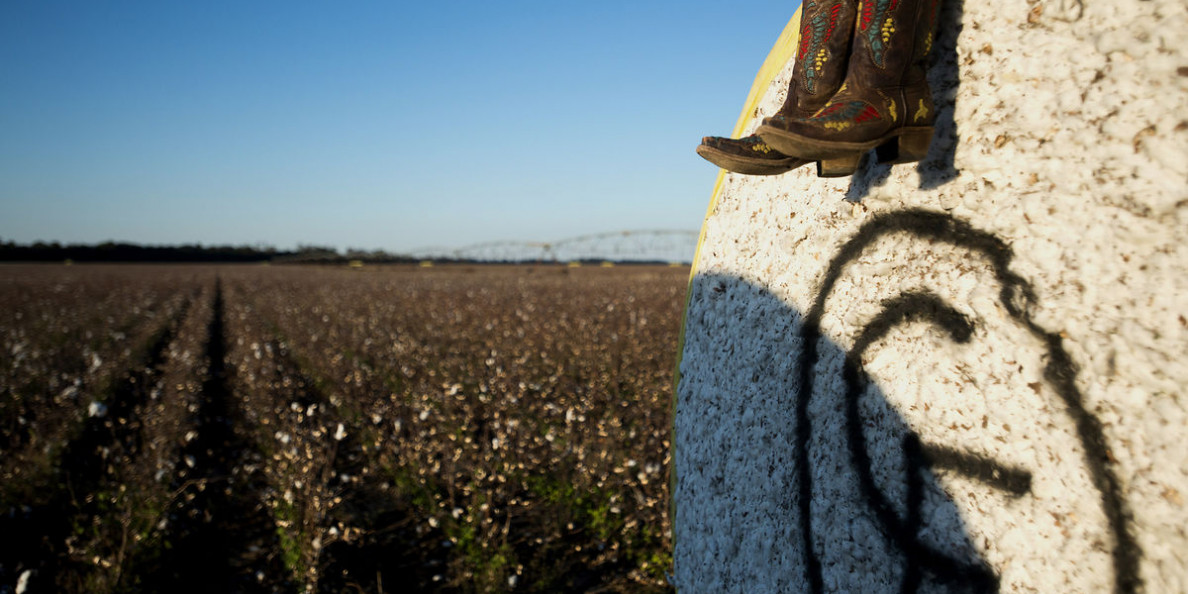August 30, 2024
Shifting weather forecasts and economic signals from the Fed have kept traders on their toes. Despite a turbulent week, cotton futures have shown resilience, offering a glimpse into what may lie ahead for the U.S. crop and global demand.
- December futures gained 58 points, settling at 69.34 cents per pound.
- Going into the weekend, ICE futures were higher after the Fed hinted at rate cuts in September. However, prices then fell for three consecutive days, likely due to a more favorable weather forecast in the Southwest that would bring relief from the heat and potentially benefit a portion of the crop. Cotton futures turned around and recouped most losses thanks to strength in outside markets.
- Trading volume was modest this week, which is typical for summer months. The total number of open contracts declined by 5,650 to 227,377.
The Personal Consumption Expenditures (PCE) price index came in slightly below expectations providing further indications that a rate cut is imminent.
- U.S. Gross Domestic Product (GDP) showed that the U.S. economy grew more than expected in the second quarter at a seasonally adjusted rate of 3.0%, providing market strength.
- As the market anxiously awaits the Fed’s decision, expectations are for a 25 basis point rate cut in September.
- Nvidia, the world’s highest-earning company, reported substantial earnings for the second quarter, far surpassing expectations. However, shares fell, causing a pullback in the stock.
- The U.S. dollar hit a 52-week low but finished the week higher after the GDP report and weekly jobless claims fell more than expected.
U.S. export sales were on par with expectations, with the report showing average sales and weak shipments.
- For the 2024/25 marketing year, 135,200 Upland bales were booked for the week. Shipments of 144,200 bales were below average for this time of the year.
- Demand from China remains tepid, and we have the lowest level of commitments since 2016. China is the world’s largest consumer of cotton, and the lack of demand is concerning.
- There are reports that the crop in Pakistan has backtracked, reducing overall production, which should increase inquiries into U.S. cotton.
- Pima merchandisers sold 21,900 bales for the week and exported 11,100 bales.

Adverse weather has taken a toll on the U.S. crop, decreasing the good to excellent condition rating to 40%.
- The crop rated good to excellent in Texas decreased by 3% this week to 26%. Oklahoma decreased by 10% to 45%, but Kansas increased by 7% to 55%.
- In the U.S., 89% of cotton is setting bolls, and 25% of bolls are opening.
- Harvest stalled in parts of South Texas as scattered rainfall was reported throughout the region. Open skies and warmer weather would be welcome in the coming days, but scattered storms remain in the near-term forecast.
- The rest of Texas, Oklahoma, and Kansas have felt relief from triple-digit temperatures. The forecast for the week calls for cooler temperatures and normal to above-normal rain chances. Although much of the dryland crop has cut out, this could benefit the later planted and the irrigated crops.


The Week Ahead
- Due to the Labor Day holiday on Monday, the trade week will be shortened. Now that the Fed is closely watching employment numbers, next week’s jobs data should help shed light on the direction of interest rate cuts.
The Seam
As of Thursday afternoon, grower offers totaled 17,192 bales. There were 2,338 bales that traded on G2B platform with an average price of 63.84 cents per lb. The average loan was 52.54 which resulted in a premium 11.30 cents per lb. over the loan.



